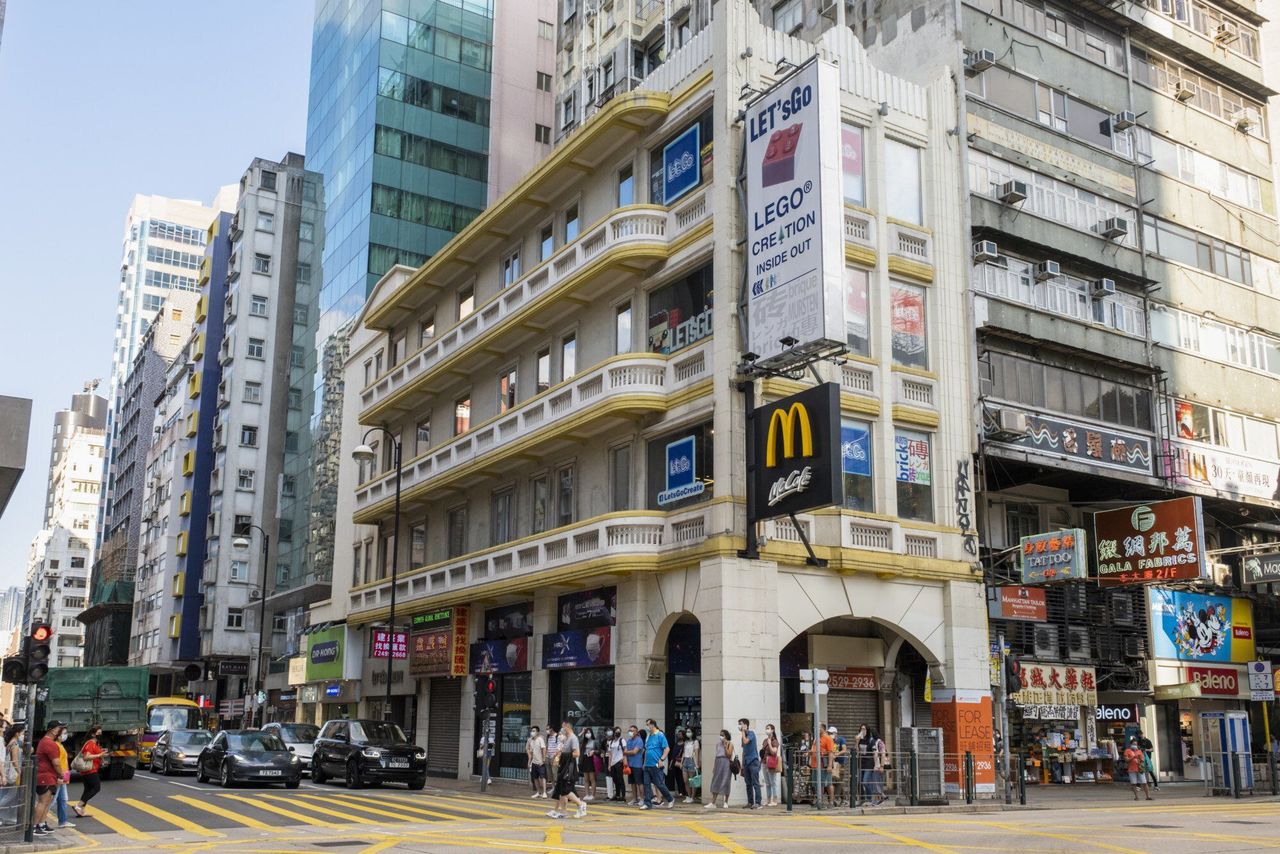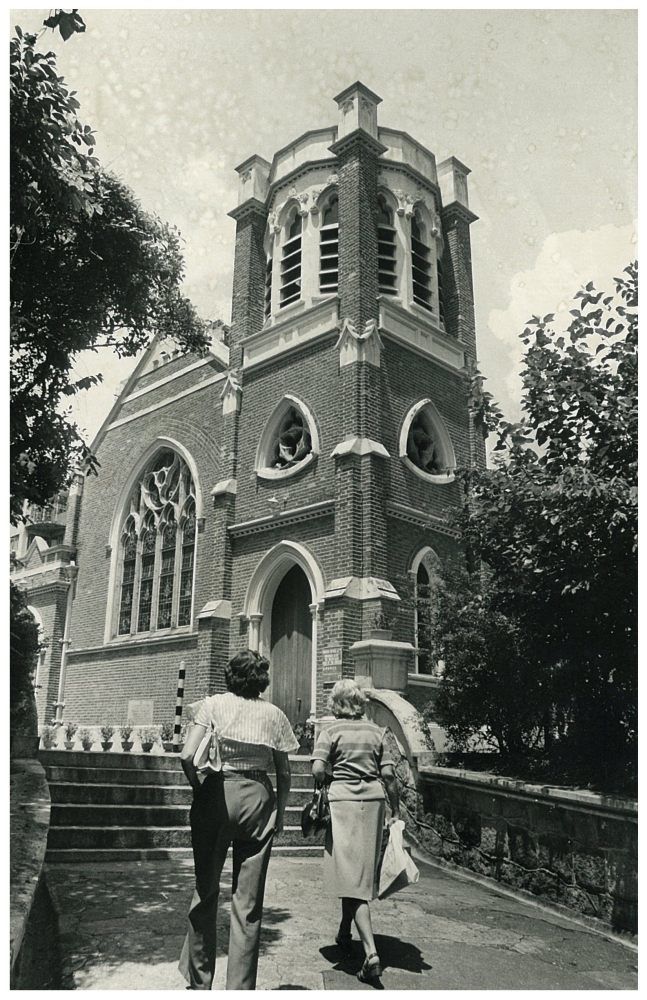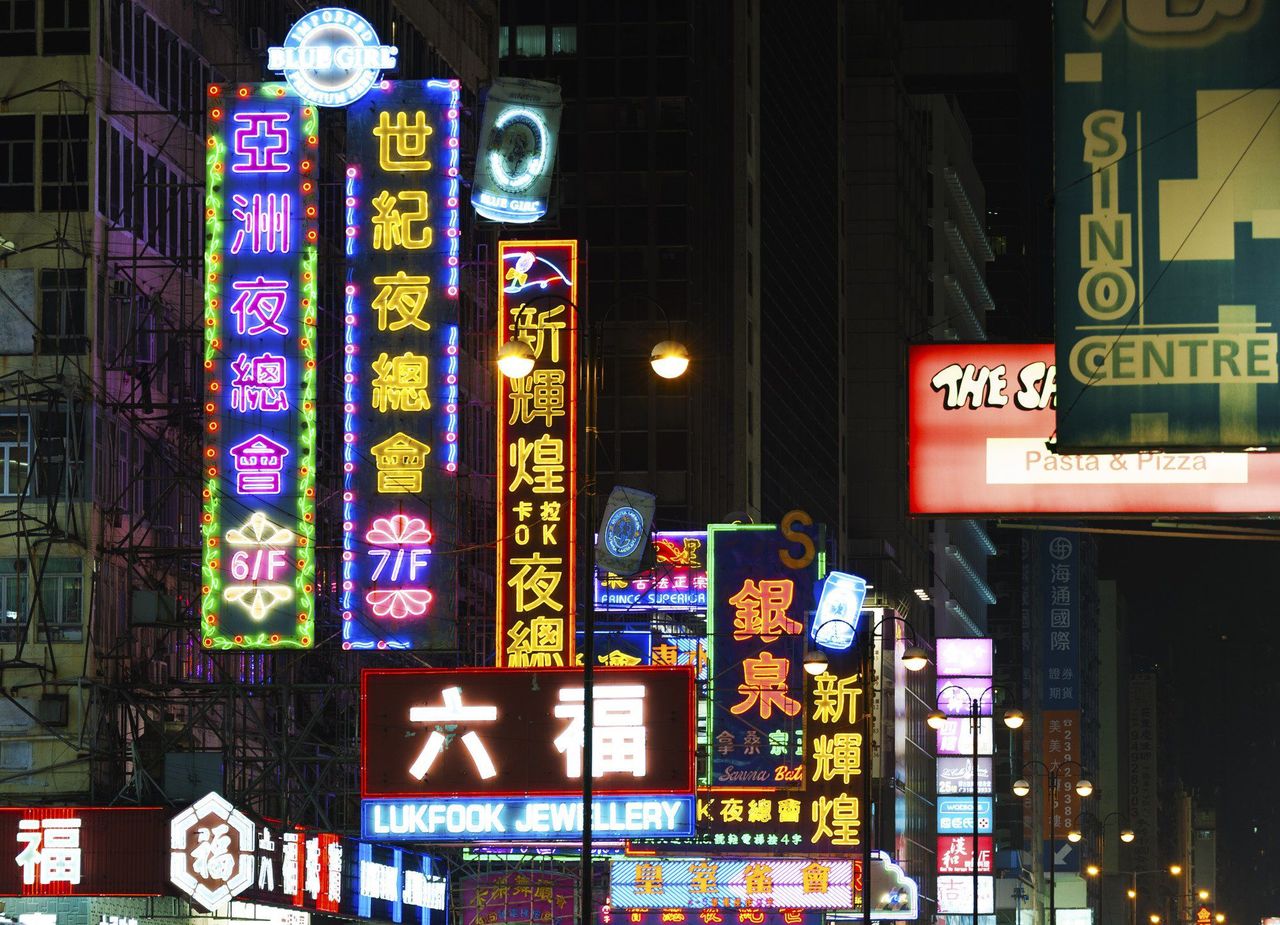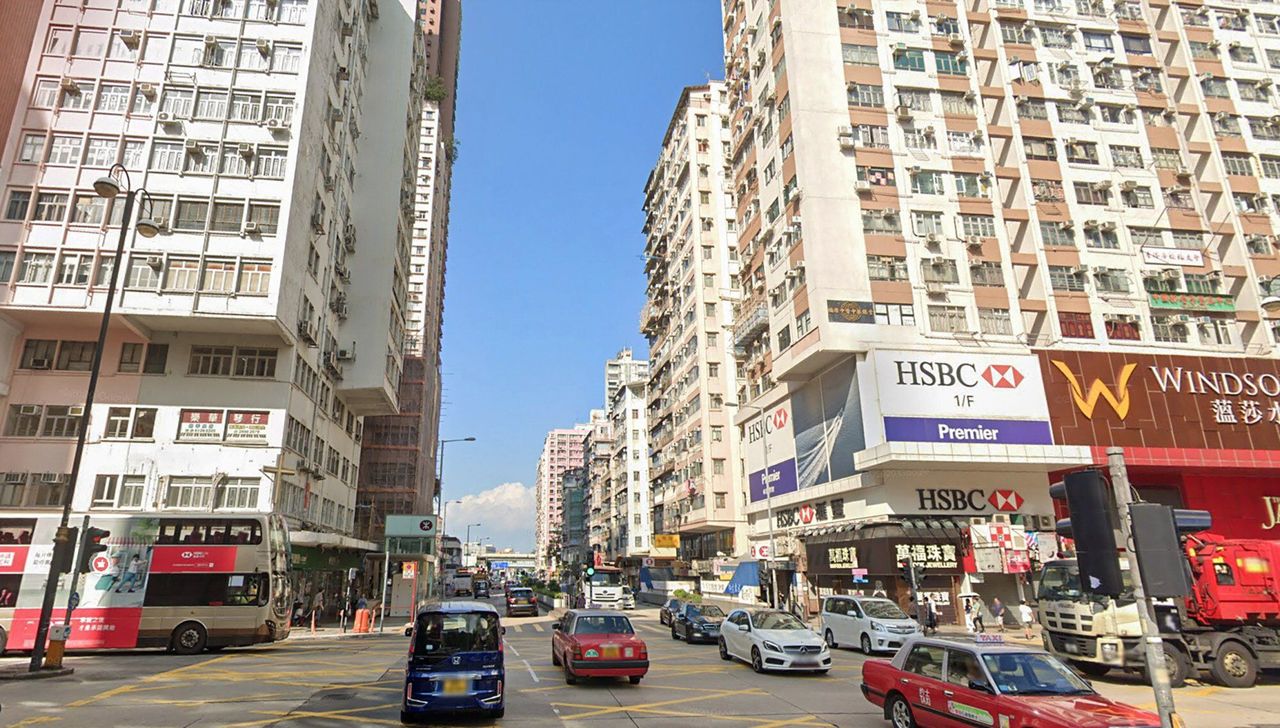The site of some of Kowloon’s oldest buildings including the graceful Peninsula hotel, the buzzing shopping street remains popular with tourists – and the streetwise sales people that target them
Nathan Road remains one of Hong Kong’s most famous streets thanks to the fact that it is lined with hotels, shops and heritage sites. Stretching 3.6km north from the Kowloon harbourfront in Tsim Sha Tsui to Sham Shui Po, it also happens to be the oldest road in Kowloon.
 Exterior view of 190 Nathan Road, a Grade 3 Heritage Building in Tsim Sha Tsui.
Exterior view of 190 Nathan Road, a Grade 3 Heritage Building in Tsim Sha Tsui. History
 The junction of Nathan Road and Gascoigne Road in 1950; on the left is the Alhambra Theatre.
The junction of Nathan Road and Gascoigne Road in 1950; on the left is the Alhambra Theatre.
The first part of the road was completed in 1861, soon after the land was ceded to the British colony by the Qing dynasty in 1860. The road began where Middle Road meets Nathan Road today, an area of beach at the time, extending to the junction with modern-day Austin Road.
The original road was lined with colonial-style homes and the Whitfield Barracks, which is now the site of Kowloon Park.
 St. Andrew’s Church on Nathan Road photographed in August 1966.
St. Andrew’s Church on Nathan Road photographed in August 1966.
The oldest Anglican church in Kowloon, St Andrew’s, was completed in 1906 and is still there. Next door to the church is a building built in 1902 with donations from Sir Robert Ho Tung that at one time housed the former Kowloon British School, the first school for expatriates in the city. The school moved to Ho Man Tin in 1937 and was renamed King George V School in 1948. The building is now the Antiquities and Monuments Office.
Nearby, at 218 Nathan Road, is the spot where Bruce Lee once lived in the 1940s and 1950s. The residential building is long gone, and it is now the site of a shopping centre.
 Bruce Lee and the Shamrock Hotel in the 1950s. Shamrock Hotel, which
opened in 1952, is at 223 Nathan Road and was opposite to Bruce Lee’s
residence (2/F, 218 Nathan Road) in the 1950s. The rooftop restaurant of
the Shamrock was a popular place for Lee’s family to enjoy their tea.
Bruce Lee and the Shamrock Hotel in the 1950s. Shamrock Hotel, which
opened in 1952, is at 223 Nathan Road and was opposite to Bruce Lee’s
residence (2/F, 218 Nathan Road) in the 1950s. The rooftop restaurant of
the Shamrock was a popular place for Lee’s family to enjoy their tea.
Another heritage building on Nathan Road is the Peninsula Hong Kong, built by Iraqi Jewish brothers Ellis and Elly Kadoorie, and officially opened on December 11, 1928. It was billed as the “finest hotel east of the Suez” and nicknamed the “Grande Dame” by locals and expats alike.
Over the middle part of the 20th century, the street also became studded with theatres, which often did dual duty as cinemas and venues for live entertainment.
In the 50s and 60s, large residential buildings went up in Jordan and Tsim Sha Tsui, which over time have become filled with myriad small hotels and businesses. One such, Mirador Mansions, was famous for its huge concentration of tailors.
One road – so many names
 Nathan Road in late 2012, showing why it is known as one of the most neon-lit streets in the world.
Nathan Road in late 2012, showing why it is known as one of the most neon-lit streets in the world.
Nathan Road was originally named Robinson Road after Hong Kong’s fifth governor, Sir Hercules Robinson. However, there was some confusion between this Robinson Road and the one on Hong Kong Island, once that road was finished. The name was changed to Nathan Road in 1909 after the 13th governor of Hong Kong, Sir Matthew Nathan, who served the city between 1904 and 1907.
In 1908, Nathan Road was extended to Waterloo Road. Then the section between Gascoigne Road and Argyle Street, was renamed from Coronation Road to Nathan Road in 1926.
 The junction of Nathan Road and Waterloo Road in Yau Ma Tei.
The junction of Nathan Road and Waterloo Road in Yau Ma Tei.
Nathan Road was known as “the Golden Mile” in post World War II Hong Kong. Now the only trace of that name having been a thing is its incorporation into the name of the Holiday Inn at 50 Nathan Road.















